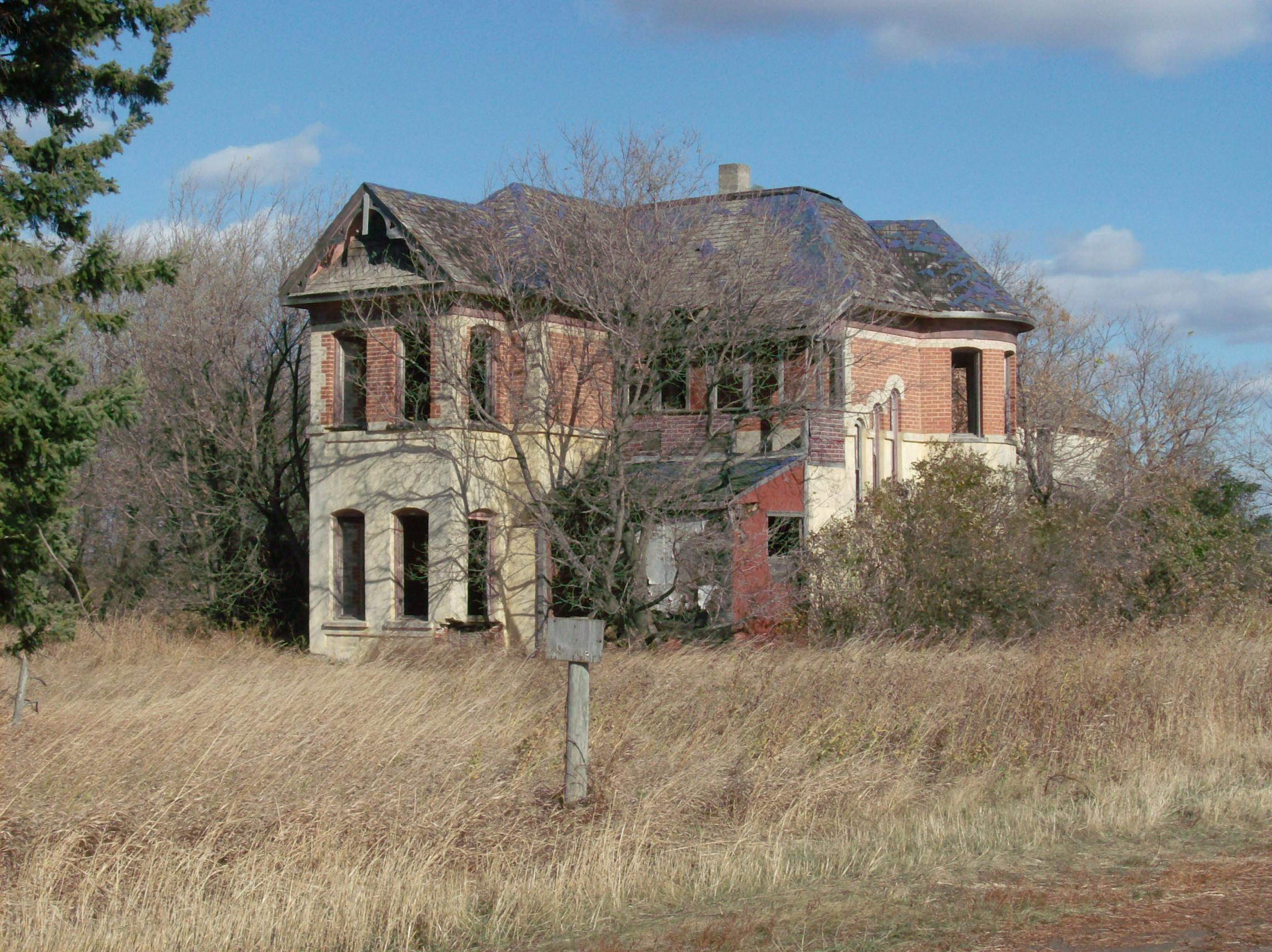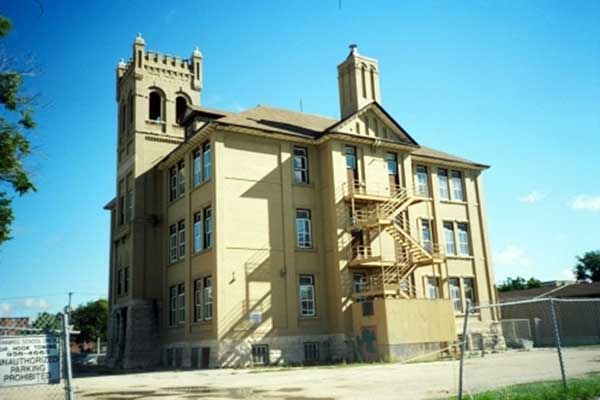12 SACRED PLACES
DAY FOUR
ST VICTOR’S PETROGLYPHS
August 13, 1995
“To carve, to celebrate, to become”
Above and south of the tiny village of St Victor, SK a row of sandstone outcrops protrude over Sylvan Valley. The view from the place is spectacular. To the north Montague Lake is a blue dash among yellow and green fields checked with black summer fallow. To the west is Twelve Mile Lake; in the east is Willow Bunch Lake. All three of these lakes are remnants of a wide and deep spillway filled for thousands of years with torrents of glacial meltwater. Though invisible, you are perched on the Continental Divide.
Etched into the top of one of the sandstone promontories is a variety of petroglyphs, images hand carved in the stone. Turtles, human faces, grizzly bear paws with long claws, human hands and feet, buffalo, elk and deer prints with dewclaws are carved into the horizontal sandstone surface.

St Victors Petroglyphs, on the flat stone beyond the fence, and its incredible setting along the western side of the Missouri Coteau. The sandstone carvings are now protected by the fence. The verdant landscape attests to the amount of rain during 2010 summer.
Near the outer edge of the stone, there are carvings of two human feet aligned so the next step would be into thin air or perhaps onto the ice. It’s possible this small site was an unglaciated area during the last Ice Age and the ice abutted this cliff.
Usually petroglyphs are carved on vertical surfaces. This site is unusual because the images are on a horizontal surface making the petroglyphs difficult to see in broad daylight, claims the pamphlet. I’ve never had any problem seeing them no matter what time of day I visit. The technique used to create the carvings begins with a pecking tool and a hammer stone to create a rough outline. Then the carvers used a stick of wood with sand and water to grind out the centre and smooth the edges.
Access to the petroglyphs has changed radically since my last visit. Formerly you walked up the side of the cliff on a wooden staircase, 165 steps in all. Along the way, you could marvel at the beautifully eroded sandstone chiseled, hollowed and polished by the rains. One year, in a deep crevice on the way up the cliff, I saw two turkey vulture chicks. The shiny black parent circled high and eerie above me the whole visit. Today you drive up the hill at the rear, park and follow a path to the glyphs a few hundred yards away.
Previously you could walk onto the carvings and touch them. Their delicate nature carved into sandstone meant a wire fence had to be erected to protect them from the extra wear, tear and erosion of curious tourist hands and feet. The signage and seating you see in the picture are new as well.

Shamanic carvings on a sandstone outcrop near St Victor, SK. If you half close your eyes, other images besides the big weird head will start to appear.
Some archeologists think hunters or maybe shamans carved these images. Often at sacred places, I can see the surrounding hillsides littered with encampments, tipis and little fires. The petroglyphs are different. Although the rolling uncultivated landscape could support it, there are no tipi rings anywhere. This is a holy place. My old vision of the place is that individuals came here on personal pursuits, loners with missions, shamans on sacred journeys. They came to grind symbols into this rock to celebrate the mysteries of life, not to explain them, to evoke the spirits, not conquer them. They returned time and again to continue their Creation.
Although the update on changes to the site is from a visit in 2010, I will report on my first visit to St Victor’s Petroglyphs on August 13, 1995. I drove in from the north in heavy wind and rain but after a short wait at the site the clouds broke and the sun peeked through. Well bundled against the persistent cold wind, I climb the stairs.
At first sight, I see the work of shamans, the evocative emblems of their day: grizzly bear claws, diving turtles, dewclaws of deer and human visages. I sense their peril when they returned here in high winds like today to carve, to celebrate, to become. I receive more specifics as I start to leave.
Spirit gave me an incredible gift on that day. A shaman of indiscernible origin named Broken Fingers was a major carver on this rock. He worked here over 1500 years ago. I sense gnarled fingers and hands thick with scars. In light trance, I can hear his low voice muttering away against the scraping of stone against stone. He sings a creation song as he carves. Old Broken Fingers was not the only person to carve here though his style is distinctive. The bear claws and turtles are examples of his detailed nuance.

Replicas of the petroglyph images carved at St. Victor’s. The two large grizzly bear claws and the two turtles on the left side are Broken Fingers’ work. They have a noticeable delicacy the others don’t have.
Broken Fingers appeared as an old man when I first met him. The next time he was accompanied by a young apprentice called Crow Bear. He was an attentive student, suffered the hardships of the work gladly and promised to be an expert carver. Some of the less defined works at the petroglyphs are by Crow Bear. He died at age 25 and was among the last people to carve here.
For about five years after meeting Broken Fingers, he stayed close, an active and protective spirit for me when I traveled anywhere. Although less significant in my life now, Broken Fingers looms large in my shamanic mythology.
DAY TRIPPING
CAMP HUGHES REST STOP
May to September
Troop training for World War 1 in Manitoba was largely done at Camp Hughes, located between Brandon and Carberry south of the Trans Canada Highway. The railway ran nearby and delivered so much cannon fodder daily that Camp Hughes, for a time, was the second largest city in the province. Today the trenches, foxholes and bomb craters have been filled in and the prairie reverted to peaceful pastures. Only a small plaque indicates the camp’s history.

Across the TCH, Camp Hughes Rest Stop offers travelers refuge from the road, washroom and picnic facilities and a fake forest to roam in. The trees are real enough, the forest isn’t. Constructed as a make-work project during the 1930s, the rest stop’s major feature are thousands of jack pines all planted in straight symmetrical rows. The pines, mature now, have foliage on the top third of the trunks forming a dark, shadowy canopy. The red bark flakes away and on hot summer days, the air is redolent with the smell of pine. Driving past the neat rows of straight trees gives your mind a nice spinning glow. Great movie location!
Covering several acres, the pines provide a sensual and sheltered place to stroll and stretch your legs. If you stop here, exercise caution because poison ivy is very prevalent on the forest floor. Otherwise, it’s a pleasant and unique walk.











































